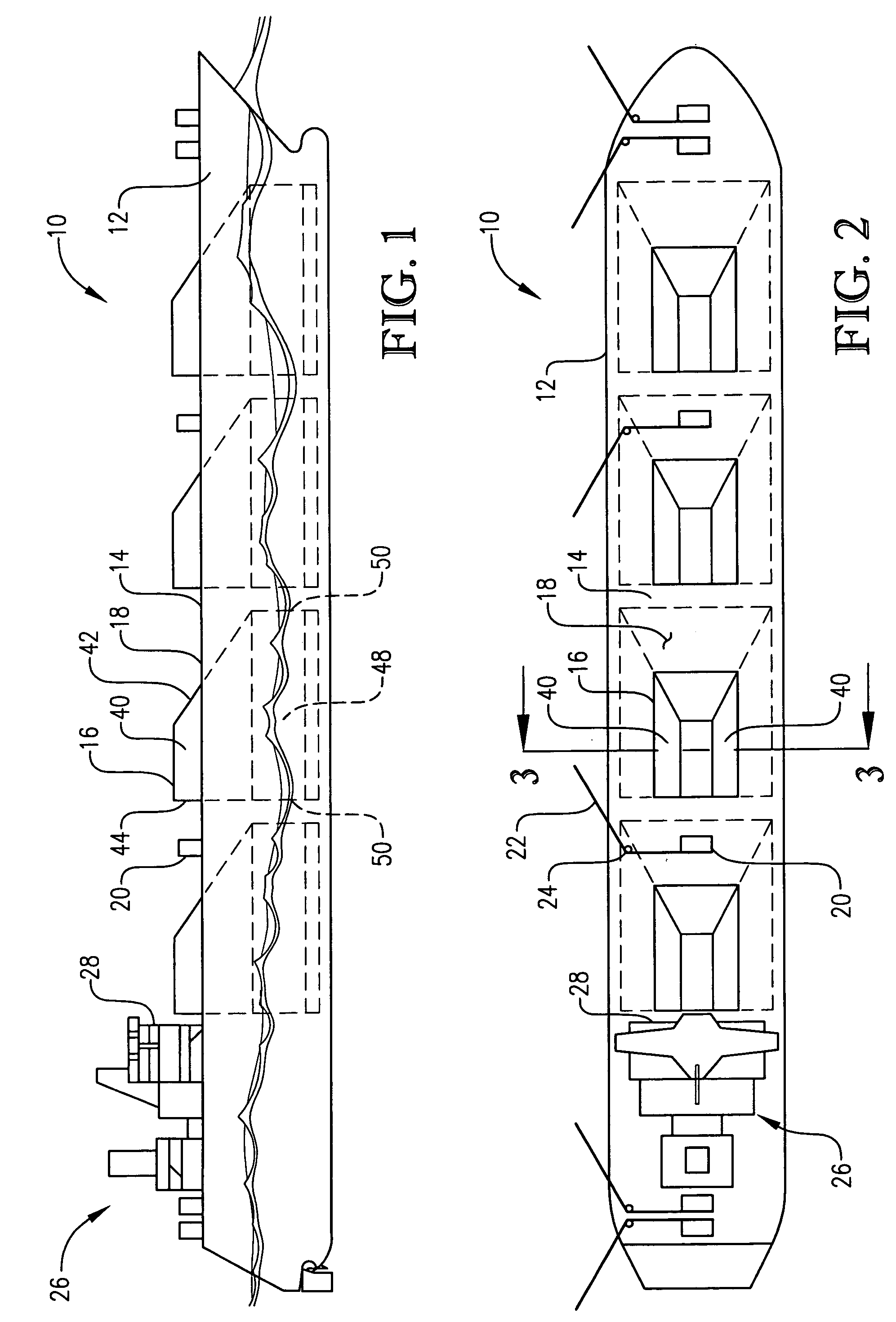High volume liquid containment system for ships
- Summary
- Abstract
- Description
- Claims
- Application Information
AI Technical Summary
Benefits of technology
Problems solved by technology
Method used
Image
Examples
Embodiment Construction
[0039] Referring initially to FIGS. 1 and 2, a tanker-ship 10 is illustrated as generally comprising a hull 12, a structural deck 14, and a plurality of tanks 16. Tanker-ship 10 can be any type of ocean-going vessel designed to carry a load of liquid over large distances. Preferably, tanker-ship 10 is a liquefied natural gas carrier (LNGC) that is equipped to transport liquefied natural gas (LNG) at low temperatures (e.g., about −260° F.) and at approximately atmospheric pressure. Tanks 16 are received in and supported by hull 12. Deck 14 extends across the top of hull 12 and presents a substantially planar, substantially horizontal, exposed upper surface 18. It is preferred for a portion of tanks 16 to extend above upper deck surface 18.
[0040] Tanker-ship 10 can also include mooring equipment supported on upper surface 18 of deck 14. The mooring equipment generally includes a mooring winch 20, a mooring line 22, and a bit 24. It is preferred for mooring winch 20 to be spaced from ...
PUM
 Login to View More
Login to View More Abstract
Description
Claims
Application Information
 Login to View More
Login to View More - Generate Ideas
- Intellectual Property
- Life Sciences
- Materials
- Tech Scout
- Unparalleled Data Quality
- Higher Quality Content
- 60% Fewer Hallucinations
Browse by: Latest US Patents, China's latest patents, Technical Efficacy Thesaurus, Application Domain, Technology Topic, Popular Technical Reports.
© 2025 PatSnap. All rights reserved.Legal|Privacy policy|Modern Slavery Act Transparency Statement|Sitemap|About US| Contact US: help@patsnap.com



